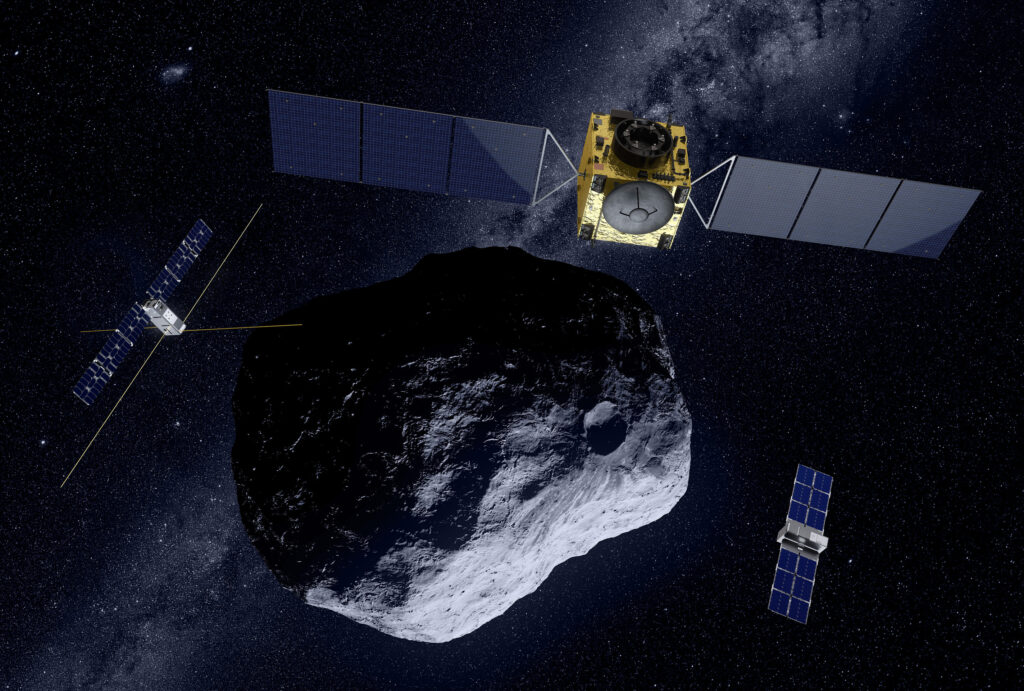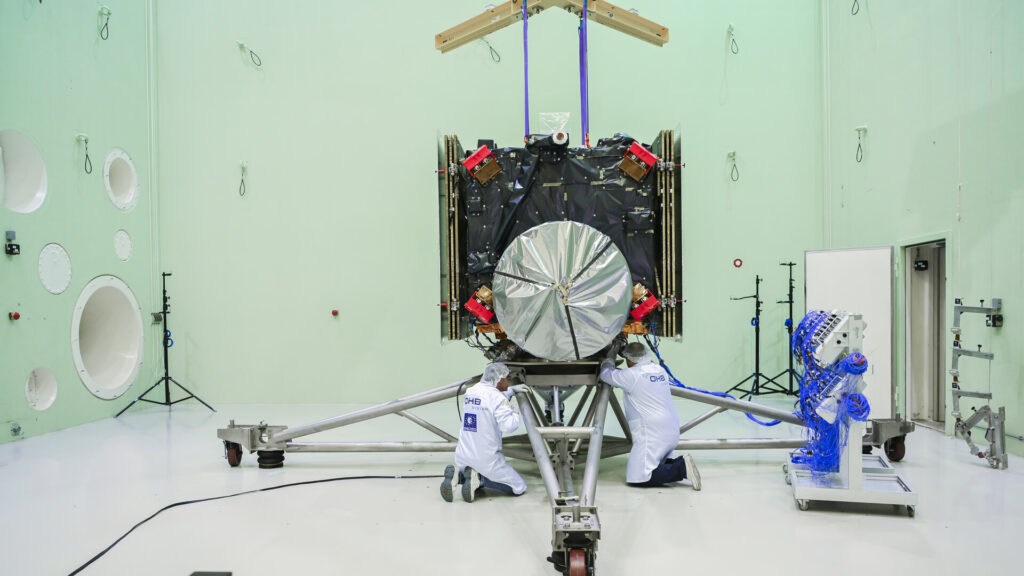Engineers of the European Space Agency (ESA) carried out acoustic tests of the Hera spacecraft successfully. Tests have confirmed that it can withstand the sound of its own launch into orbit.

The main objective of the Hera mission is to study the asteroid Dimorphos, which is a moon of the larger asteroid Didymos. In 2022, a NASA-built DART probe crashed into the Dimorphos, which knocked out a significant amount of matter from its surface and led to a change in the orbital period of the small body. Hera would study how the collision with DART affected a couple of asteroids. Also, the European spacecraft will release several CubeSats, one of which will attempt to land on a Dimorphos.
The assembly of Hera was completed in August 2023, after which engineers began a series of tests designed to certify the readiness of the spacecraft. The first were acoustic tests. Within their framework, Hera was subjected to the same vibrations that would occur during its launch.
The largest acoustic system in Europe
The tests were carried out in a Large European Acoustic Facility (LEAF) located on the territory of the ESTEC test centre in the Netherlands. The width of the LEAF camera is 11 metres, the length is 9 metres, the height is 16.4 metres. Huge sound horns are mounted in one of its walls. Nitrogen released through them can create noise up to 154 decibels, as with the simultaneous takeoff of several jet aircraft.

For security reasons, LEAF can only operate with the doors closed. To reflect the noise and create a uniform sound field inside, steel-reinforced concrete walls of the chamber are coated with epoxy resin. The wall stands on rubber supports, isolating it from the environment. This prevents damage to other parts of the test centre or nearby observers.
Hera successfully coped with all the tests. Now the spacecraft is waiting for tests in a vacuum chamber, followed by checks of its systems for electromagnetic compatibility. After that, Hera will be prepared for dispatch to Cape Canaveral.
Currently, the launch of the Hera mission is scheduled for October 2024. It is due to enter orbit around a pair of asteroids at the end of 2026.
According to https://www.esa.int
Follow us on Twitter to get the most interesting space news in time
https://twitter.com/ust_magazine
